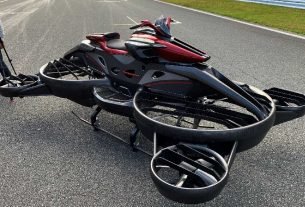The US Public Transportation Safety Board (NTSB) yesterday suggested that all new vehicles be outfitted with alcohol detection systems (liquor discovery frameworks) that can prevent individuals from driving while plastered.

The NTSB can’t issue such a guideline all alone yet encouraged the Public Expressway Traffic Security Organization (NHTSA) to do as such. The NTSB said it “is suggesting measures utilizing new in-vehicle advancements that can restrict or disallow debilitated drivers from working their vehicles as well as advancements to forestall speeding.”
Key Highlights:
l National Transportation Safety Board says over 10,000 lives could be saved annually.
l The in car alcohol interlock device which stops drink drivers from starting their engine if they are over the legal drink drive limit, at Durham Police headquarters.
l The DADSS breath-based system would use passive technology to determine if the driver is impaired, even if other people who have consumed alcohol are in the vehicle. (DADSS)
Whenever took on, this would require “inactive vehicle-incorporated liquor disability recognition frameworks, high level driver checking frameworks or a mix of the two that would be equipped for forestalling or restricting vehicle activity on the off chance that it distinguishes driver impedance by liquor,” the NTSB said. The office asked the NHTSA to “require all new vehicles to be outfitted with such frameworks.”
Under a US regulation ordered last year, the NHTSA is as of now expected to look at whether it can give this kind of rule.
While plastered driving is a longstanding issue that has caused numerous passings, the NTSB said its suggestion was prodded by examination concerning one accident killed nine individuals — incorporating seven youngsters — in January 2021 on State Highway 33 close to Avenal, California.
On that two-path expressway with a speed breaking point of 55 mph, a SUV driver leaving Another Year’s Day gathering “was driving at a speed somewhere in the range of 88 and 98 mph,” the NTSB report said.
9 dead in drunk-driving crash:
The driver neglected to keep up with control of his vehicle because of liquor use, and “his blood liquor fixation was over two times California’s essentially legitimate restriction of 0.08 grams per deciliter,” the NTSB said. The accident killed the SUV driver and eight individuals in a pickup truck, the office said:
The SUV to some degree withdrew from the cleared street onto a soil and rock shoulder region to one side. The SUV driver then made a guiding remedy to one side, making the vehicle run wild.
The SUV went across the expressway center line and meddled into the northward path straightforwardly before a northward pickup truck, which was involved by a grown-up driver and seven travelers, going in age from 6 to 15 years of age, and was going at a speed somewhere in the range of 64 and 70 mph.
The SUV and pickup truck impacted head-on. The pickup truck quickly burst into flames, and other vehicle administrators on SR 33 who halted at the accident scene had lacking chance to remove any tenants before fire inundated the truck. Because of the accident, the SUV driver and every one of the eight pickup truck tenants kicked the bucket.
While post-crash toxicology tests “identified proof of pot use, the NTSB couldn’t decide if the impacts of pot utilize added to the driver’s hindrance,” the NTSB said. The reasonable justification of the deadly accident “was the disappointment of the game utility vehicle (SUV) driver to control his vehicle because of an elevated degree of liquor hindrance,” the NTSB said.
We inquired as to whether it intends to require new vehicles to be outfitted with liquor location frameworks. A NHTSA representative answered with an assertion saying, “The main OK number of debilitated driving accidents is zero.
The organization has started work to meet the Bipartisan Framework Regulation’s necessity for rule making concerning progressed weakened driving innovation in vehicles.” The law was sanctioned in November 2021.
Congress urged NHTSA to act:
Segment 24220 of the Bipartisan Framework Regulation requires the NHTSA to give a standard “that requires traveler engine vehicles made after the powerful date of that norm to be outfitted with cutting edge tipsy and weakened driving counteraction innovation.”
Assuming the standard is executed, the law says the NHTSA should give it by November 2024 and afterward give vehicle makers no less than two except for close to three years to consent.
However, there’s a proviso. That’s what the law says in the event that the NHTSA decides such a standard would struggle with Segment 30111 of Title 49 in US regulation, it can defer giving a standard for quite a long time and submit yearly reports to Congress depicting the explanations behind not giving the standard.
Every yearly report would likewise need to contain a report on “the organization of cutting edge tipsy and disabled driving avoidance innovation in vehicles.”
Recorded as a hard copy the law, that’s what congress noticed “in 2019, there were 10,142 liquor impeded driving fatalities in the US including drivers with a blood liquor fixation level of .08 or higher, and 68 percent of the accidents that brought about those fatalities included a driver with a blood liquor focus level of .15 or higher.”
Congress likewise referred to a concentrate by the Protection Foundation for Parkway Wellbeing assessing that “exceptional alcoholic and debilitated driving counteraction innovation can forestall in excess of 9,400 liquor disabled driving fatalities every year.”
“We want NHTSA to act. We see the numbers,” NTSB Seat Jennifer Homendy expressed, as per a Related Press article. “We want to ensure that we’re giving our best for save lives.” Homendy likewise said the NTSB “has been pushing NHTSA to investigate liquor checking innovation starting around 2012,” the AP wrote in a summarization of her remarks.
NTSB said, Industry moving too slowly:
The NTSB’s report on the Avenal crash expressed that in 2020, “approximately one out of three traffic fatalities came about because of accidents including liquor hindered drivers” and that “late information show that impeded driving accidents are expanding.”
“Since individuals who are disabled by liquor frequently have compromised judgment and enjoy expanded risk-taking, mediations are required that don’t need dynamic by hindered drivers,” the NTSB said.
“Vehicle-coordinated latent liquor identification advances that keep or breaking point weakened drivers from working their vehicles have huge lifesaving potential; in any case, improvement of the innovations has been slow, and extra activity is expected to speed up progress in carrying out these advances.”
The NTSB needs the Collusion for Car Advancement, an industry bunch addressing makers of almost 98% of new vehicles and light trucks sold in the US, to illuminate its individuals about the January 2021 accident in California and “urge them to speed up improvement and focus on arrangement of cutting edge disabled driving avoidance innovation and to look for imaginative ways of adjusting existing advances, for example, driver observing frameworks, to battle liquor hindered driving.”
One continuous undertaking is the Driver Liquor Identification Framework for Security Exploration Program, in which the Auto Alliance for Traffic Wellbeing and NHTSA are “exploring a first-of-its-sort innovation called the Liquor Recognition Framework that will distinguish when a driver is inebriated with a blood liquor fixation (BAC) at or above 0.08 percent — as far as possible in every one of the 50 states aside from Utah — and keep the vehicle from moving.
“The venture site says the “framework will be made accessible as a security choice in new vehicles, similar as programmed slowing down, path takeoff advance notice and other high level driver help vehicle advances.”
Utah upholds a BAC cutoff of .05%, and the NTSB recently approached any remaining states to match the Utah standard.
The NTSB likewise needs the reception of keen speed variation (ISA) to decrease speeding, however that is not another solicitation. The NTSB said it “repeated a proposal to NHTSA to boost traveler vehicle makers and buyers to take on ISA frameworks by, for instance, remembering ISA for the New Vehicle Evaluation Program (NCAP).” This innovation might have decreased the seriousness of the Avenal crash, the NTSB said.
The Public Transportation Security Board (NTSB) is formally suggesting that every new vehicle and trucks be outfitted with liquor identification gadgets.
The choice comes following an examination concerning a head-on impact that occurred on New Year’s Day 2021 in Avenel, California, between a speeding SUV being driven by a disabled driver and a pickup truck that left nine dead.
“Innovation might have forestalled this lamentable accident — similarly as it can forestall the huge number of fatalities from disabled driving and speeding-related crashes we find in the U.S. every year,” NTSB Seat Jennifer Homendy said in a report.
“We really want to carry out the innovations we have on the spot to save lives.”
The NTSB, which has no administrative power itself, has told the Public Roadway Traffic Security Organization (NHTSA) that it ought to carry out a prerequisite for the frameworks alongside a program that would boost automakers and buyers “to embrace smart speed transformation frameworks that would forestall speed-related crashes” in any event, when liquor isn’t involved.
As per the NTSB, there were 11,654 fatalities happened in liquor hindered crashes in 2020, which addressed roughly 30% of all mishap related passings.
NHTSA is now dealing with the subject as the framework bill endorsed into regulation by President Biden in 2021 incorporated a necessity for all vehicles to be outfitted with detached liquor interlocks, which would make them inoperable in the event that a high blood liquor level is recognized.
The law directs that guidelines be created in somewhere around three years and allows automakers two years to agree, however permits the Branch of Transportation to broaden the periods, if in fact important.
Dissimilar to the frameworks right now ordered by states for drivers indicted for DUI offenses, which expect them to inhale into a cylinder prior to beginning their vehicles. NHTSA and 17 automakers have been creating and testing a uninvolved breath test and a touch framework that utilizes infrared light to quantify the blood liquor level through the skin as a feature of the DADSS (Driver Liquor Identification Framework for Security) program.
Subtleties on how the last rendition of the innovation will work are as yet being worked out, yet the current post-retail interlock frameworks regularly cost around $60 to $150 to introduce and $60 to $80 each month to adjust and screen from a distance, as per producer Lifeline.
U.S. traffic passings down, yet stay at ‘Emergency Level‘:
Jay Stanley, a senior strategy expert for the ACLU, said the association praises endeavors to save lives, yet that this innovation raises worries about the misusing of individual data.
“There are a ton of ways that wellbeing can be further developed that don’t affected attacking individuals’ protection. Keeping the information in the vehicle would assist with tending to that,” Stanley said.
“I trust the controllers perceive the reality of this issue and don’t play with how the data gathered is overseen by the automakers.”
NHTSA says on its site that “to be considered for boundless sending, the DADSS innovation should be consistent, exact, and exact, and subtle to the clearheaded driver. It should likewise be demonstrated dependable to be introduced in the vehicle armada and publically ideal.”


